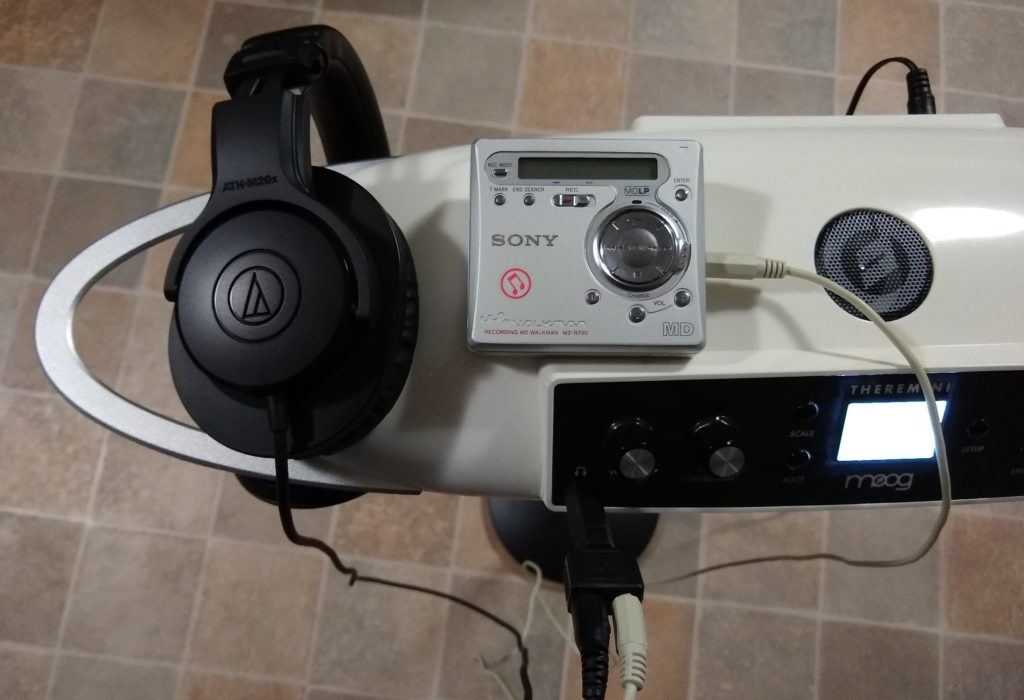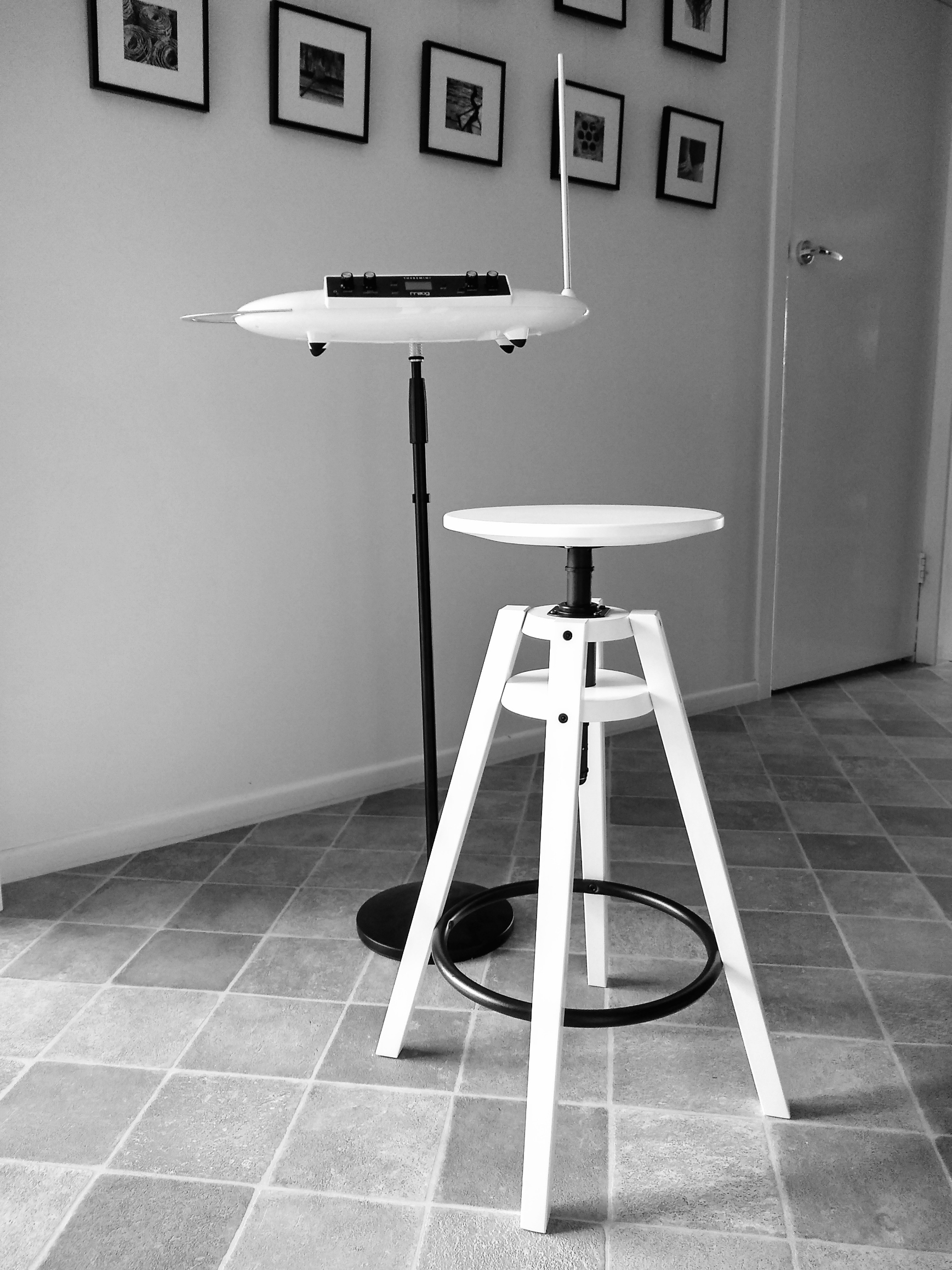After a few rehearsals, and a bunch of play-list alterations, and heaps of experimentation, we were ready to go.
Our resident tech manager hooked up the Theremini in stereo (using guitar leads from both L and R outputs into an equaliser box, then via 2 microphone leads into 2 channels of the mixing desk, allocating them hard L and R ) to the PA system, flanking guitars had their own amps and the drummer…well…drummed unaided (I am guessing in a bigger venue, with a fancier sound system he would have his drums miked also?).
I found a space (the Theremin does not like to share air, so a physical distance around the instrument is necessary to calibrate it so it can be played) in the middle of the band and set up. It felt awesome to play like that – some songs worked really well with the Theremin, others I sat out, but it looked like the audience enjoyed it, and there was LOTS of interest in what that weird instrument was, and why I was waving around, and how that waving around controlled the instrument. That said, noodling was loads of fun – Theremini and Bass is a groovy combination that I would love to explore some more.
Note to self: monitoring what I am playing is _really_ important. Going through a PA usually means I am behind the speakers, so when the band is loud I cannot hear myself, making pitching problematic (or is that just avant-garde? I guess it depends how confidently I play awful notes). I must investigate either a splitter or fold-back speaker, should such a thing happen again.
The “out” maximum device volume when plugged into the guitar-jack L-R sockets is fixed by the device settings. The “volume” knob on the Theremini ceases to do anything when plugged in to anything but the headphones socket. In a revelation, I accidentally discovered that I can control the overall device volume level (not the volume antenna volume) of a preset by pressing the “setup” button, which switches between status and edit modes, then twiddling the “effect” knob raises and lowers the device volume. I am assuming edit mode also lets me tweak other parameters live, and must explore this in less time-critical moments. This was SO handy as previously I was tweaking the gain and volume on my channel on the mixing desk to equalise levels (as no 2 presets seem to be as loud as each other).
I love it that I am learning heaps by making mistakes.


